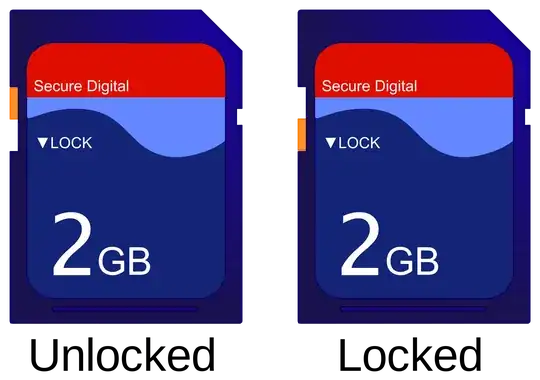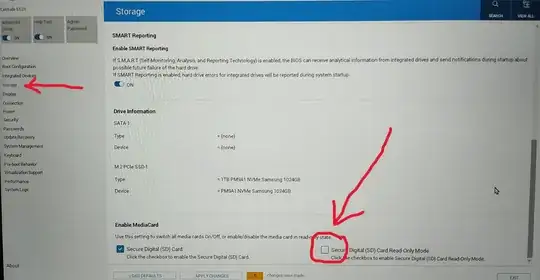I have a MicroSD card reader in my notebook. When I insert a MicroSD memory card into it, I can't write any data on it - it's read-only. The same thing happens when I try to do it under root. And I can't change the permission policy for it. This problem happens for all microSD cards (I've tested 2 cards). I've encountered it on Ubuntu 12.04 LTS, now I'm on Ubuntu 12.10, the problem is still on it's place. When I try to insert such a "read-only" card in my mobile phone, everything's OK and I can write data on it. So, can anybody tell me, how can I write a data onto the card?
UPD: here's fdisk -l output:
Disk /dev/sdc1: 2013 MB, 2013135360 bytes
62 heads, 62 sectors/track, 1022 cylinders, total 3931905 sectors
Units = sectors of 1 * 512 = 512 bytes
Sector size (logical/physical): 512 bytes / 512 bytes
I/O size (minimum/optimal): 512 bytes / 512 bytes
Disk identifier: 0x00000000
Device Boot Start End Blocks Id System
The file system of the card is msdos. As to me it's weird.
UPD2: I've found a small "lock" switch on my card adapter, and it turns out, that when I insert it in my notebook, it switches on. Perhaps, I have to find some glue or something to get that switch stuck...
UPD3: There was no glue near me, so I've decided to buy another card-reader.



fdisk -lshould be small enough to post inline with code formatting. Just paste it, select it in the post editor, and press Ctrl+K. – nanofarad Nov 07 '12 at 00:55